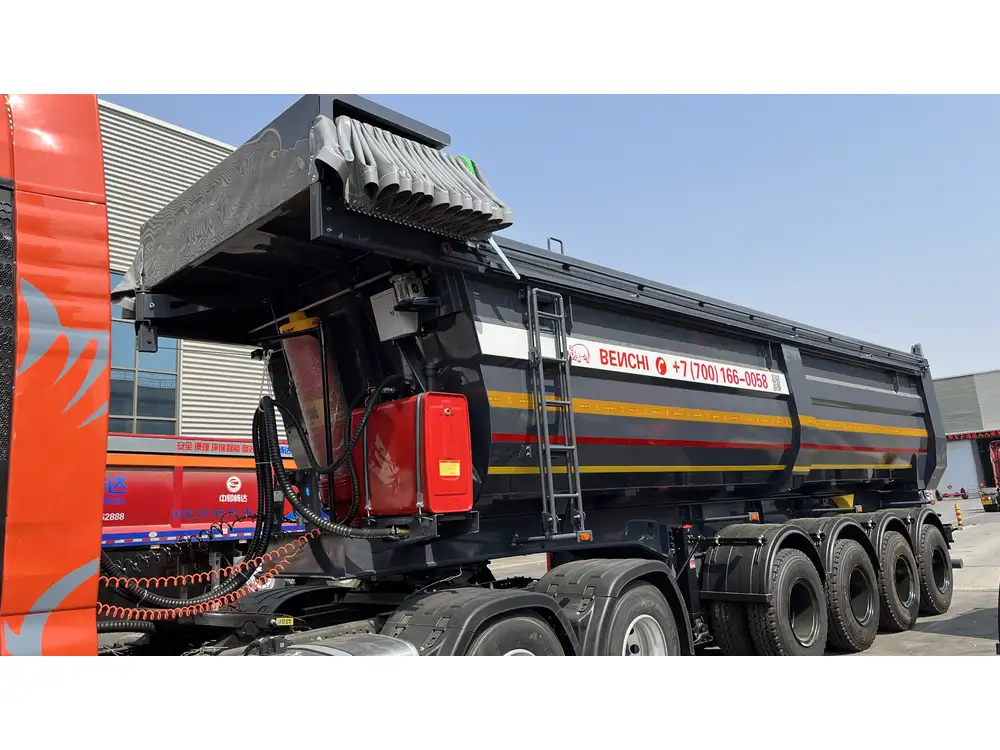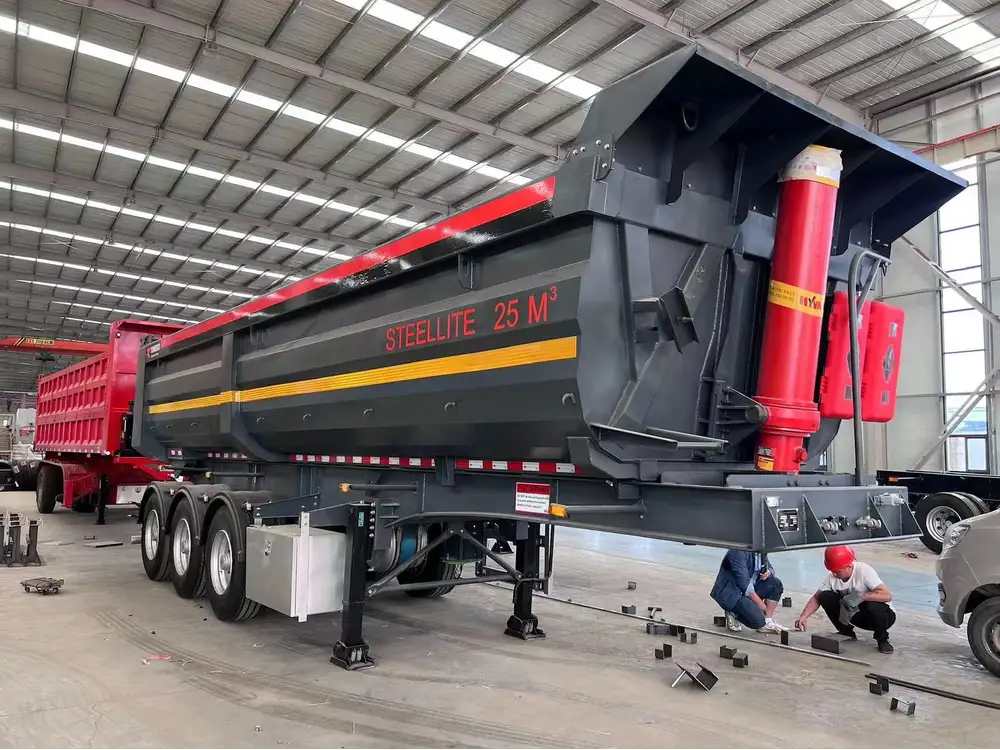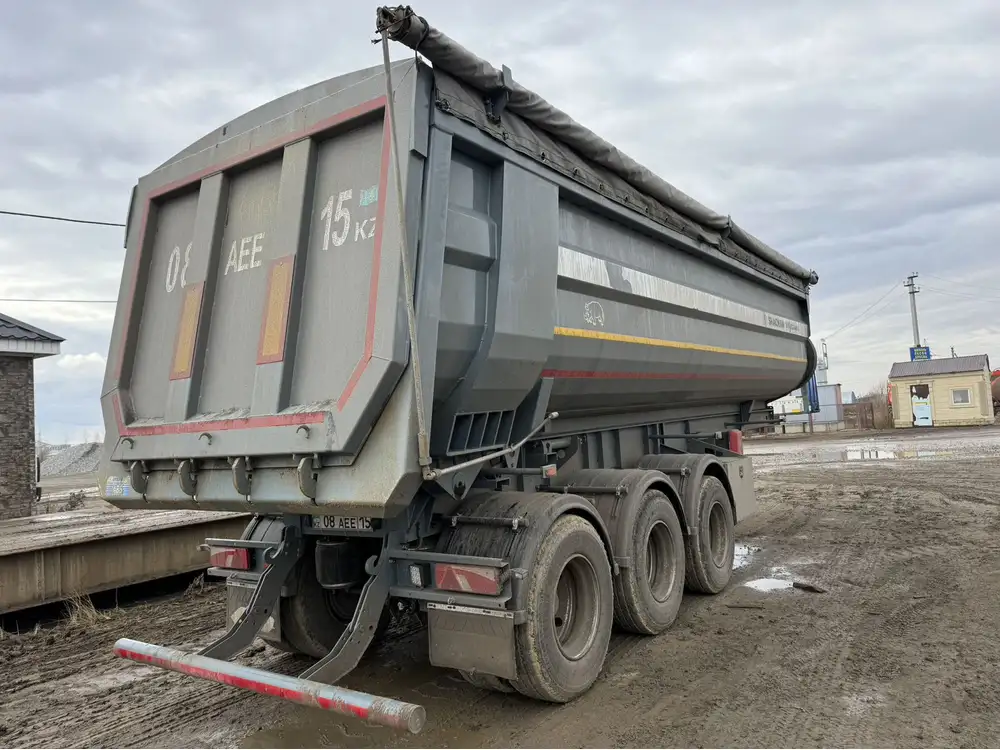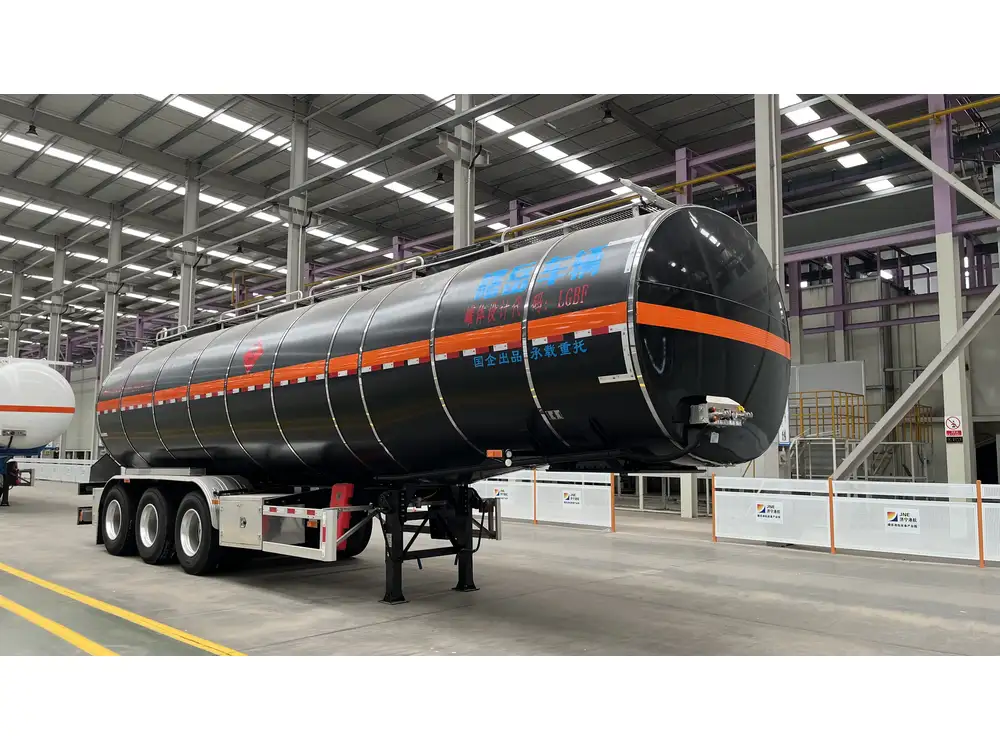In the expansive world of transportation, particularly in freight and logistics, the semi-trailer tail is an essential component that significantly impacts efficiency, aerodynamics, and safety on the road. For those seeking to delve into the intricacies of semi-trailer tails, this comprehensive guide addresses critical aspects, addressing user intent and answering frequently overlooked questions.
What Is a Semi-Trailer Tail?
A semi-trailer tail, commonly known as a tail, is an additional structure mounted at the rear end of a semi-trailer. Its primary purpose is to enhance the aerodynamics of the vehicle, reducing drag and improving fuel efficiency. The tail can take various forms, including fixed extensions, hinged flaps, and retractable designs, making it a versatile tool for optimizing trailer performance.
Key Features of Semi-Trailer Tails
| Feature | Description | Benefits |
|---|---|---|
| Aerodynamic Design | Smooth curves or angled surfaces that help reduce wind resistance | Increased fuel efficiency, lower operating costs |
| Material Composition | Constructed from lightweight materials such as aluminum or plastics | Durable, corrosion-resistant, easy to handle |
| Adjustability | Options for fixed, foldable, or retractable designs | Versatility in various transport scenarios |
| Cost-Effectiveness | Potential to yield savings through enhanced fuel efficiency | Justifies initial investment with long-term gains |

The Importance of Semi-Trailer Tails in Logistics
In logistics, every detail counts. A well-designed semi-trailer tail can improve overall vehicle performance, which translates to significant savings and operational efficiency. Here’s why they matter:
1. Fuel Efficiency
One of the most significant advantages of employing a semi-trailer tail involves its direct impact on fuel consumption. By streamlining airflow and reducing drag, logistics companies can observe reductions in fuel costs, enabling them to allocate resources more efficiently.
2. Environmental Impact
As sustainability takes precedence globally, reducing emissions through improved fuel efficiency is a critical concern for logistics companies. Semi-trailer tails contribute by lowering the carbon footprint of freight transportation.

3. Operational Efficiency
Enhanced aerodynamics results in potentially faster transport times. A semi-trailer equipped with a tail can maintain higher speeds with lower power requirements, allowing logistics companies to optimize delivery schedules.
Types of Semi-Trailer Tails
Understanding the different types of semi-trailer tails can help manufacturers and users select the appropriate design based on their specific needs. The following list delineates the common types:
1. Fixed Tails
Fixed semi-trailer tails are permanently attached to the trailer’s rear. Their simplistic design ensures consistent performance but may not offer flexibility in various transport situations.

2. Folding Tails
These are designed to be deployed when needed and stored when not in use, providing users with adaptability during loading or unloading processes. Folding tails combine convenience with performance.
3. Retractable Tails
Often engineered for maximum efficiency, retractable tails adjust height or position based on cargo type or weather conditions, thereby optimizing aerodynamics.
4. Tailboards
Enhanced by incorporating panels that can swing or fold, tailboards serve a dual purpose of improving aerodynamics while providing an additional dimension for securing loads.

Common Issues Associated with Semi-Trailer Tails
While semi-trailer tails provide numerous benefits, they are not without challenges. Understanding these issues can assist manufacturers in addressing user concerns effectively.
1. Maintenance Requirements
Regular maintenance is essential to ensure optimal performance. Accumulation of dirt, grime, or damage to tail mechanisms can hinder functionality. Companies should implement routine inspections.
2. Compatibility with Trailers
Not all semi-trailer tails are suitable for all types of trailers. Users should confirm compatibility before purchase, ensuring that the tail’s design aligns with the specific trailer model for seamless operation.

3. Operational Limitations
In some cases, certain tail designs may restrict maneuverability in tight spaces. Companies must weigh the benefits of enhanced aerodynamic performance against possible compromises in truck handling.
Tail Aerodynamics: The Science Behind the Design
To comprehend the functionality of semi-trailer tails fully, it’s essential to explore the underlying principles of aerodynamics involved.
Drag Reduction
The semi-trailer tail’s unique shape allows air to smoothly flow around the trailer, reducing turbulence and drag. According to the principles of fluid dynamics:
- Turbulent airflow generates greater resistance than streamlined flow.
- By elongating the rear end of the trailer, semi-trailer tails minimize the zone of turbulence created by the abrupt edge of the trailer’s body.

Practical Applications
Manufacturers have implemented computational fluid dynamics (CFD) simulations to optimize tail designs further. Such technology calculates the airflow patterns around the trailer, leading to the development of prototypes that offer the best performance characteristics.
Regulations and Compliance for Semi-Trailer Tails
Adopting semi-trailer tails is not merely a matter of functionality; compliance with local and federal transportation regulations is paramount. Users should be aware of the following regulations:
- Federal Motor Carrier Safety Administration (FMCSA) guidelines outline safety and structural quality benchmarks for trailer accessories.
- Many states have specific length regulations that affect how tall a trailer plus tail can be, impacting how much cargo can be transported legally.
Table: Overview of Regulations
| Regulation Authority | Focus Areas | Key Considerations |
|---|---|---|
| FMCSA | Safety, Design, Structure | Compliance with federal safety standards |
| State Regulations | Length, Weight Limits | Variance in regional laws; checking local guidelines |

Conclusion
A semi-trailer tail is an indispensable feature for optimizing freight transport design and efficacy in today’s logistics landscape. With a variety of designs to suit different operational needs and compliance requirements, understanding their intricacies, benefits, and challenges can empower manufacturers and users alike.
To stay competitive and align with sustainability goals, exploring the integration of semi-trailer tails represents both an investment in innovation and a commitment to operational excellence. As logistics continues to evolve, leveraging advanced technologies in trailer design will undeniably pave the way for enhanced performance and efficiency in the transport sector.
Frequently Asked Questions (FAQs)
1. How much can a semi-trailer tail reduce fuel consumption?
Empirical evidence suggests that a properly installed semi-trailer tail can yield fuel savings ranging from 5% to 10%, depending on various factors such as speed, cargo weight, and trailer design.

2. Will installing a tail impact my truck’s weight limit?
The addition of a semi-trailer tail may contribute to weight but often pays dividends through improved fuel efficiency, which can offset any additional weight concerns. It’s crucial to consider overall payload capacity when making modifications.
3. What material is best for semi-trailer tails?
Aluminum and high-strength plastics are commonly preferred due to their lightweight properties and resistance to corrosion, contributing to longer service life and durability.
4. Can I modify my existing trailer to accommodate a semi-trailer tail?
In many cases, modifying an existing trailer to install a semi-trailer tail is feasible. Still, it’s recommended to work with a specialist to ensure compliance and proper integration.

5. Are there any specific maintenance tips for semi-trailer tails?
Regular checks for any wear-and-tear on hinges, cleaning off accumulated dirt, and ensuring mechanisms operate smoothly, with appropriate lubrication when necessary, are vital for ensuring longevity and performance efficiency.
In summary, a semi-trailer tail is more than just an accessory—it’s a forward-thinking solution that promises tangible benefits in a competitive sector. Embracing this technology is crucial for manufacturers looking to enhance their product offerings while also meeting market demands for efficiency and sustainability.



